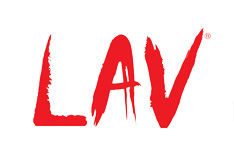Music and Spatial-Temporal Reasoning
Spatial-temporal reasoning skills hone the brain’s ability to perceive the visual world, to form mental images and recognize variations of physical objects. They are essential for success in a variety of disciplines, notably engineering, the sciences and mathematics. (1)
Many problems common to these disciplines are not easily described in verbal form, and depend for their solutions on abstract thinking and visualizations — skills that result from developed spatial-temporal reasoning ability.
Reading, verbal competence and writing ability also seem to be strongly tied to spatial-temporal reasoning, which proves to be enhanced through music education. (2,3)
There is robust evidence that active musical training — especially when coupled with music notation — enhances students’ performance on spatial-temporal reasoning tests. (3)
Research shows that the study of music may most benefit students from challenged socio-economic backgrounds, who display a particularly dramatic improvement in spatial-temporal reasoning ability following musical training. (3-5)
References
- Graziano, Amy B., Peterson, M., Shaw, Gordon L. (1999). Enhanced Learning of Proportional Math Through Music Training and Spatial-Temporal Training, Neurological Research, 21: 139-152
- James S. Catterall. (2002). The arts and the transfer of learning, In R. Deasy (Ed.) Critical Links: Learning in the arts and student social and academic development. Washington DC: Arts Education Partnership
- Hetland, Lois. (2000). Learning to Make Music Enhances Spatial Reasoning, The Journal of Aesthetic Education, 34(3): 179-238
- Rauscher, Frances H., Shaw, Gordon L., Levine, Linda J., Wright, Eric L., Dennis, Wendy R., Newcomb, Robert, L. (1997). Music Training Causes Long-term Enhancement of Preschool Children’s Spatial-Temporal Reasoning, Neurological Research, 19(1): 2-7
- Rauscher, Frances H., Zupan, Mary Ann. (2000). Classroom Keyboard Instruction Improves Kindergarten Children’s Spatial-Temporal Performance: A Field Experiment, Early Childhood Research Quarterly, 15(2): 215-228
 Donate
Donate